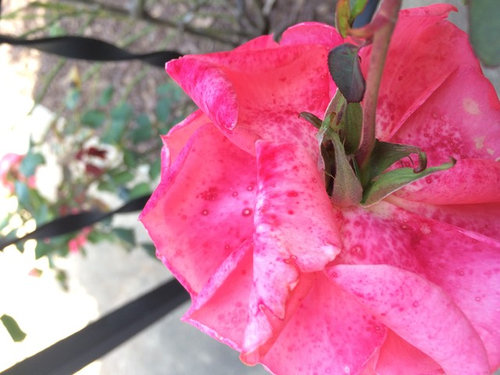

Control with fungicides is very effective. Spores of the fungus are air-borne from one plant to another. It is more easily seen on dark blossoms than white ones even though the white varieties may be slightly more susceptible. Powdery Mildew (fungus – Oidium spp.): A white powdery type substance may be observed on leaves, petioles, petals or flower stems.

Surface sterilize the area surrounding the plants with a household cleaner or bleach. All disease tissue should be removed as this serves as a source for new spores. The disease is more severe when atmospheric conditions are cool and damp, poor air circulation exists and when light intensity is low. A grayish fungal growth may be seen upon close examination of diseased tissue. Preventive measures include using sterilized soil and avoiding plant introductions that may harbor crown rot organisms.īotrytis Blight (fungus – Botrytis cinerea): Leaves, flowers and petioles develop small water-soaked spots that enlarge rapidly. Caution should be used in getting the right dosage levels since excessive levels of some chemicals may damage plants. Drenches should be administered when the first evidence of disease occurs. Two alternatives are available for infected plants: One is to discard all affected and exposed plants and the other is to use fungicide drenches. Unless treatment is administered before massive root death, the plant will have to grow an entirely new root system before recovery occurs. Roots are killed rapidly and appear brown. Older leaves droop and younger leaves showing stunting. Crown Rot (fungi – Pythium spp., Phytophthora spp., Fusarium spp.): Crown rot is probably the most serious disease of African violets and may cause loss of entire groups of plants.


 0 kommentar(er)
0 kommentar(er)
